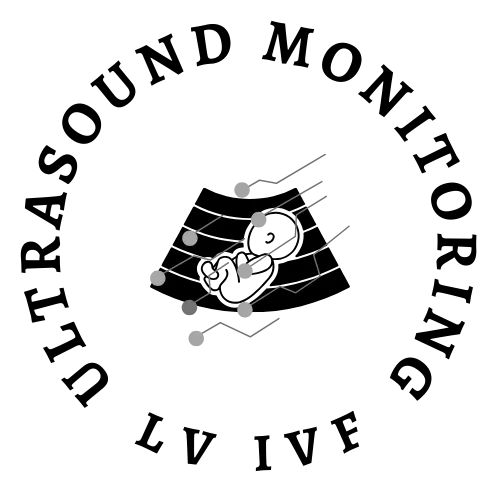
Ultrasound Monitorig
for Your IVF Cycle
For IVF monitoring cycles that are out-of-state of your location
Starting your cycle
Starting an IVF cycle is stressful enough, doing it with an out-of-state provider just increases that stress. That is why we have developed an out-of state monitoring program to help women that need ultrasound monitoring without having to travel to their provider. We follow your physicians instructions and with be able to accommodate your schedule. Most all cycles, whether retrievals or transfers, will need 2-3 ultrasounds during that cycle. All reports can be faxed or emailed to your physician within 2-3 hours after the exam is finished.
To schedule an appointment
Please Call True Health Acupuncture at 702-475-0870
You can also book online on the True Health Acupuncture website.
1481 W Warm Spring Rd #129
Henderson, Nevada 89014
Testimonials
My name is Michelle Aukerman. And I just have to say that Joyce at True Health Acupuncture is probably the best ultrasound technician I have ever had in my life and I’ve been through several. She’s very personal and talks through everything and if something goes wrong, she says OK how do we make this right? What’s the next step we need to take? You don’t hear that from any other ultrasound tech, they're so jaded. The comfort environment at True Health Acupuncture is unmatchable. It does not feel like a doctor's office and everybody is so warm but when it comes to Joyce, she is completely unmatched. It’s like having your own mother right there with you. I highly highly recommend her.
Thank you, the Aukerman’s

Michelle A.
This is the second pregnancy that I came to Joyce for my outside monitoring. I have been very nervous about the whole process, but Joyce guided me through each and every ultrasound. Although the monitoring went smoothly, upon achieving pregnancy I developed some bleeding. Of course, I panicked. Joyce explained everything that was going on with my bleeding and helped me through this anxious time. I don’t know what I would have done without Joyce’s calm demeanor. And the added bonus is having acupuncture treatment right there at True Health Acupuncture, the office Joyce works out of. I will always be truly thankful for the amazing experience that I received from both Joyce and True Health to be a part of my fertility journey.

Sara P.
Joyce is an exceptional individual who made a significant impact during my IVF journey. I had the privilege of meeting her when I needed support, and she was able to perform ultrasounds when our IVF Dr was unable to accommodate us. Her ability to confirm our twin pregnancy was incredibly reassuring. Joyce took the time to explain everything she was observing, which not only made the experience more memorable but also helped alleviate my anxiety. Her compassionate approach truly made a difference in my experience.

Nicole B

Before IVF: The History and Basics of IUI Treatment New Blog Post
Before IVF: The History and Basics of IUI Treatment
For couples struggling to conceive, Intrauterine Insemination (IUI) is often one of the first steps in assisted reproduction. It's less invasive than IVF and can be a promising option for the right candidates. Before jumping into complex protocols and lab-based fertilization, let’s take a step back and look at the history of IUI, how it works, and how it compares to IVF.
📜 A Brief History of IUI
The roots of IUI go back further than you might expect:
Late 1700s: The first known attempt at artificial insemination was recorded in London when a physician inseminated a woman with her husband’s sperm using a syringe.
1800s: Techniques were sporadically used in veterinary medicine and experimented with in humans.
1960s–1980s: As fertility clinics emerged and sperm washing techniques were developed, IUI became a more routine medical procedure.
Modern era: IUI is now widely used in fertility clinics as a first-line treatment for many types of infertility, especially when timing or cervical issues are suspected.
🧪 What Is IUI, and How Does It Work?
Intrauterine insemination is a simple procedure that places washed sperm directly into a woman’s uterus around the time of ovulation. The goal? To get as many high-quality sperm as close as possible to the egg at the exact right moment.
👣 Step-by-step overview of a typical IUI cycle:
Ovulation tracking or induction (with or without medication)
Semen sample collection (from partner or donor)
Sperm washing (removes debris, increases motility concentration)
IUI procedure (a thin catheter places sperm into the uterus)
Post-IUI support or progesterone, if needed
🔬 IUI vs IVF: What’s the Difference?
Though both are fertility treatments, IUI and IVF are fundamentally different in how and where fertilization takes place.

🧭 When Is IUI Used?
IUI is often the first medical fertility treatment considered in cases of:
Unexplained infertility
Mild male factor infertility (low count or motility)
Cervical factor infertility
Sexual dysfunction or same-sex couples using donor sperm
Women using donor sperm to conceive as a single parent
💡 Final Thoughts
IUI doesn’t work for everyone—but for many couples, it’s a logical and affordable step to try before moving on to IVF. It’s quick, usually painless, and requires fewer medications and office visits. As we continue this series, we’ll explore how medicated and natural IUI cycles differ, what to expect with each, and what testing is needed to prepare.
